Abstract
When given to sheep as a single oral dose at 0.1 mg/kg, the B1a component of the avermectins caused a reduction of >95% in the numbers of Haemonchus contortus, Ostertagia circumcincta (including inhibited L4 larvae), Trichostrongylus axei, Trichostrongylus colubriformis, Cooperia oncophora, and Oesophagostomum columbianum. When given to cattle as a single oral dose at 0.1 mg/kg, avermectin B1a was >95% effective in reducing the numbers of Haemonchus placei, Ostertagia ostertagi (including inhibited L4 larvae), T. axei, T. colubriformis, C. oncophora, Cooperia punctata, Oesophagostomum radiatum, and Dictyocaulus viviparus. Avermectin B1a was similarly effective, with the exception of a detectable loss in activity against adult C. oncophora, when administered to cattle as a parenteral injection. Some of these ruminant parasites were fully susceptible to dosages of avermectin B1a at 0.025 mg/kg, e.g., D. viviparus, O. radiatum, O. ostertagi, and H. contortus. Avermectin B1a removed 83 to 100% of Ancylostoma caninum from dogs given a single oral dose of 0.003 to 0.005 mg/kg. The poultry nematodes Capillaria obsignata and immature Ascaridia galli were effectively removed by avermectin B1a at 0.05 and 0.1 mg/kg, respectively, but 0.1 mg/kg was not effective for Heterakis gallinarum. Thus, the avermectins would appear to have unprecedented potency and spectrum of biological activity.
Full text
PDF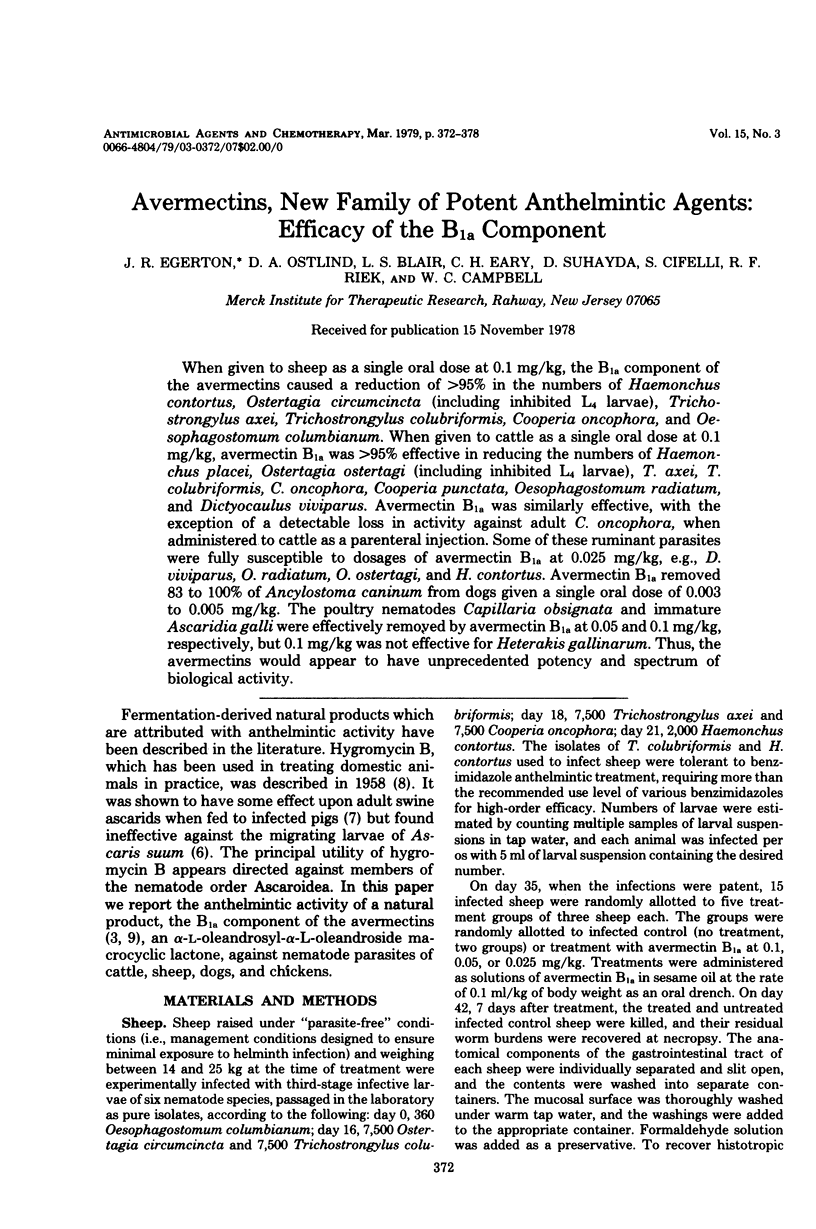
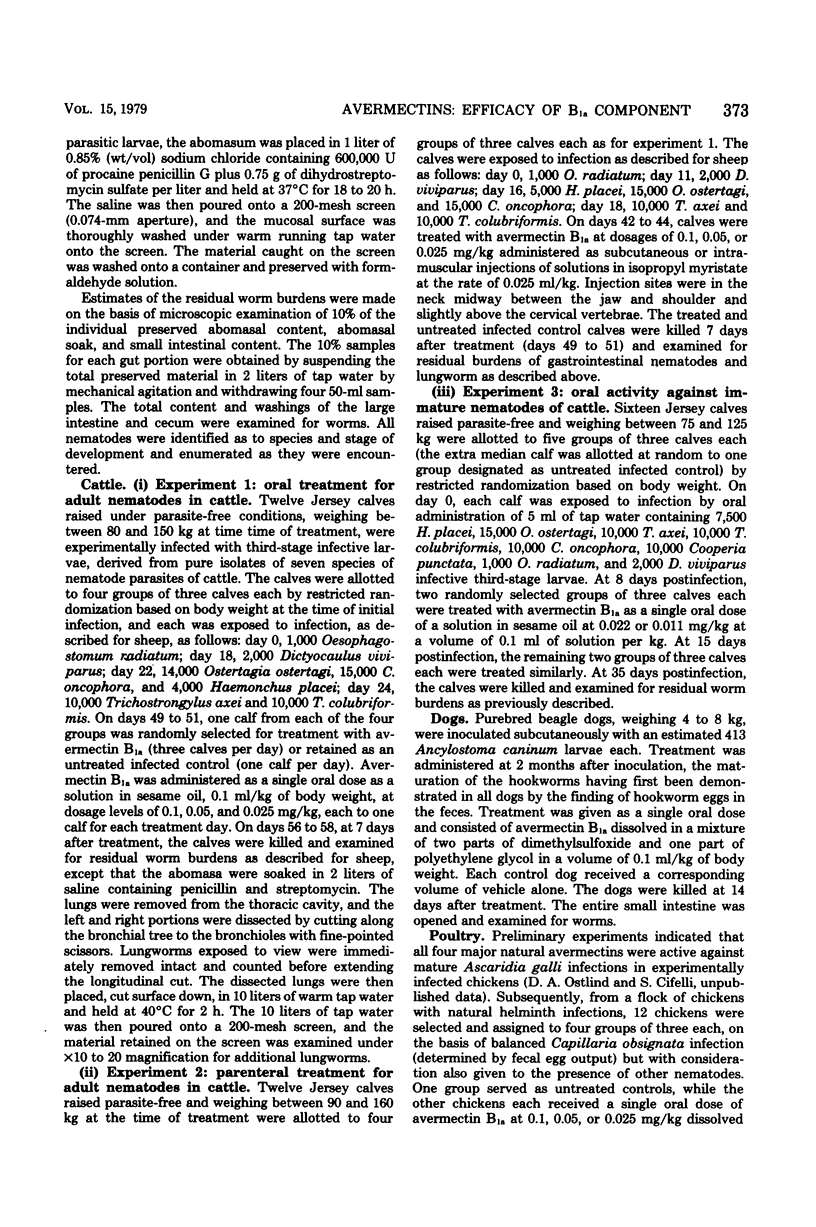
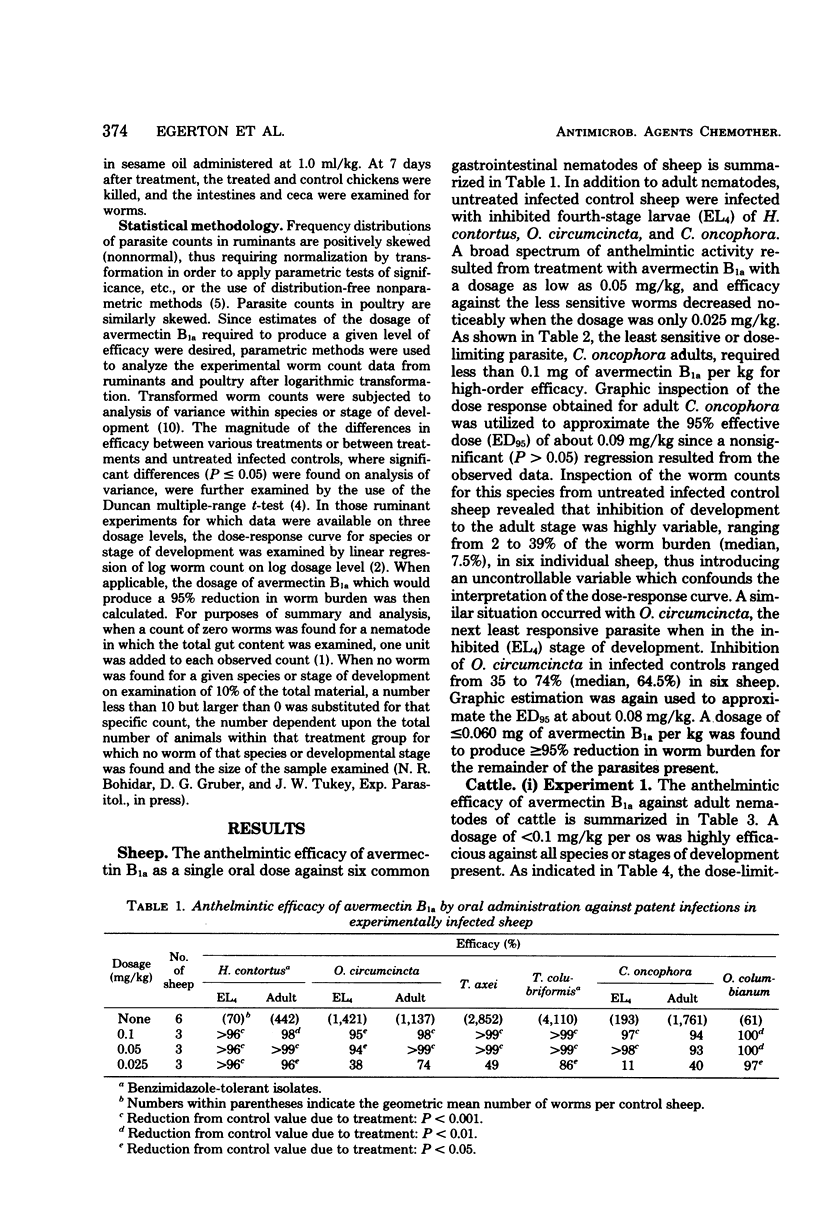
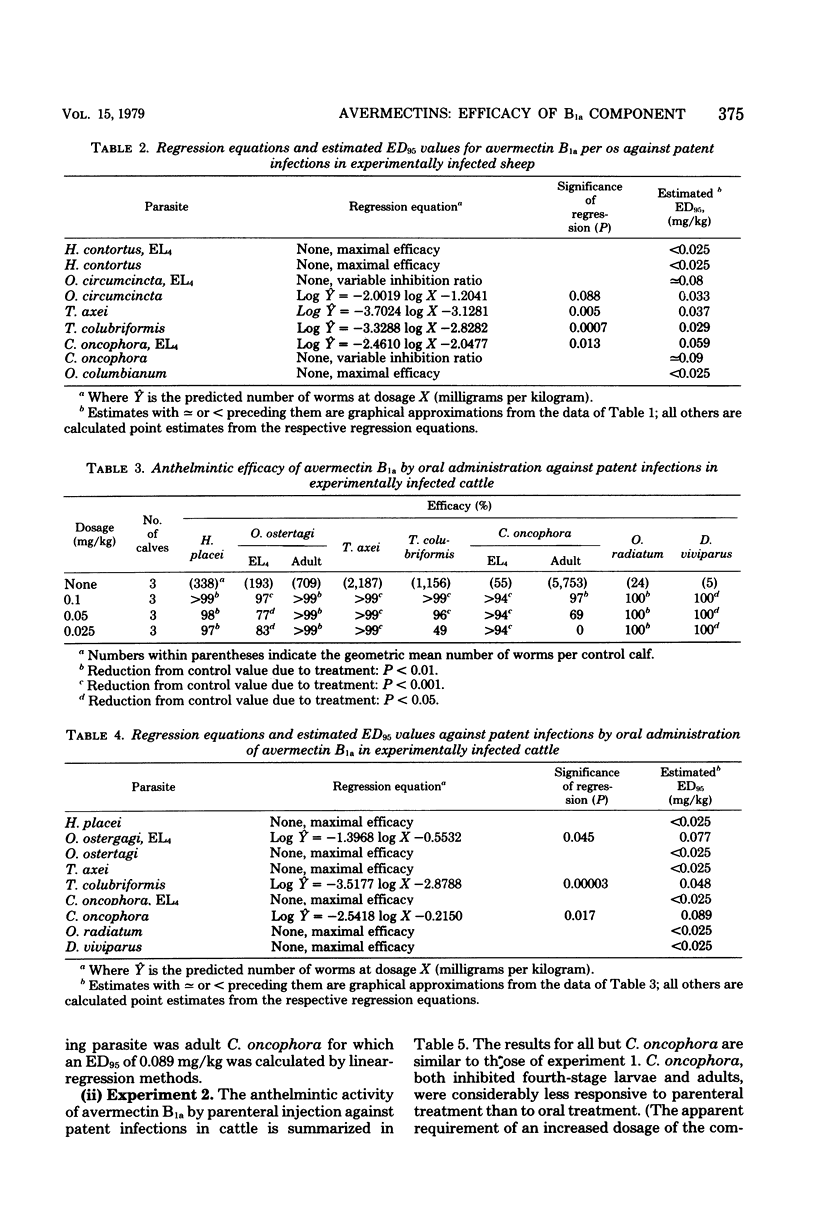
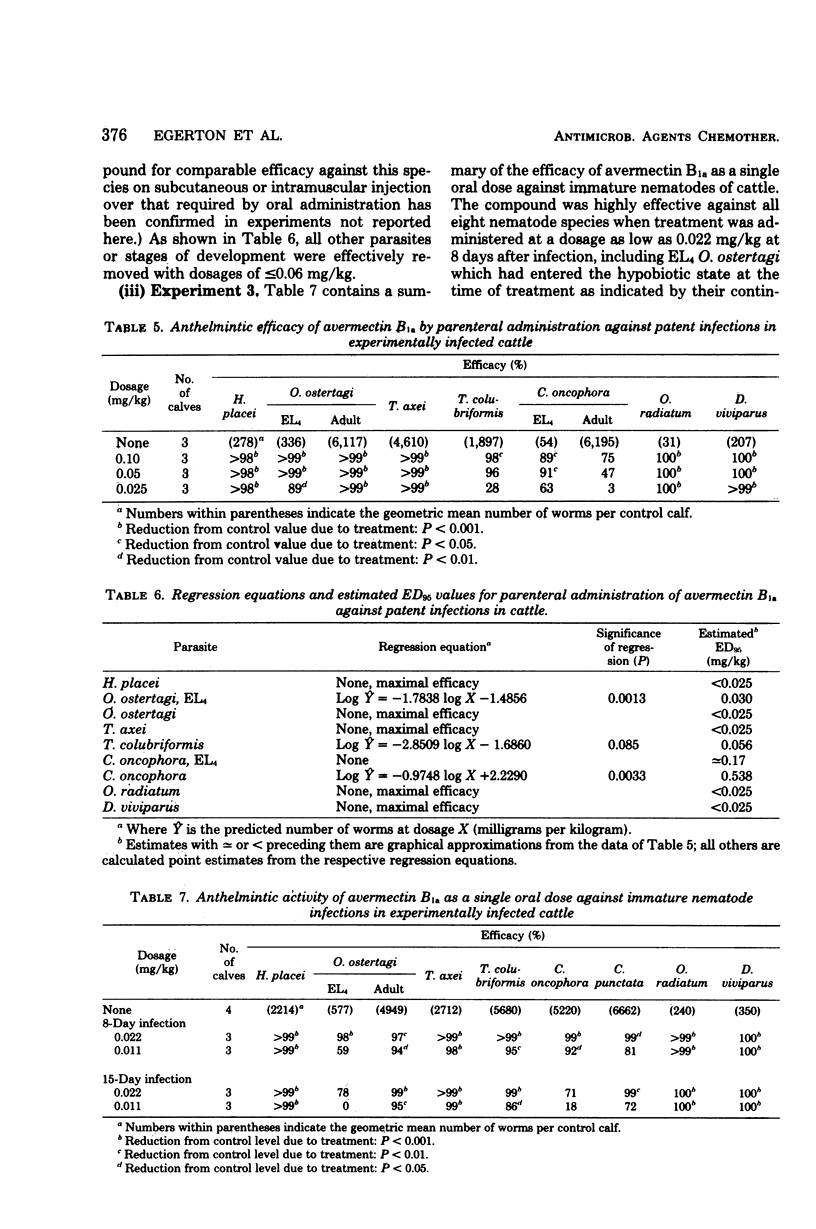
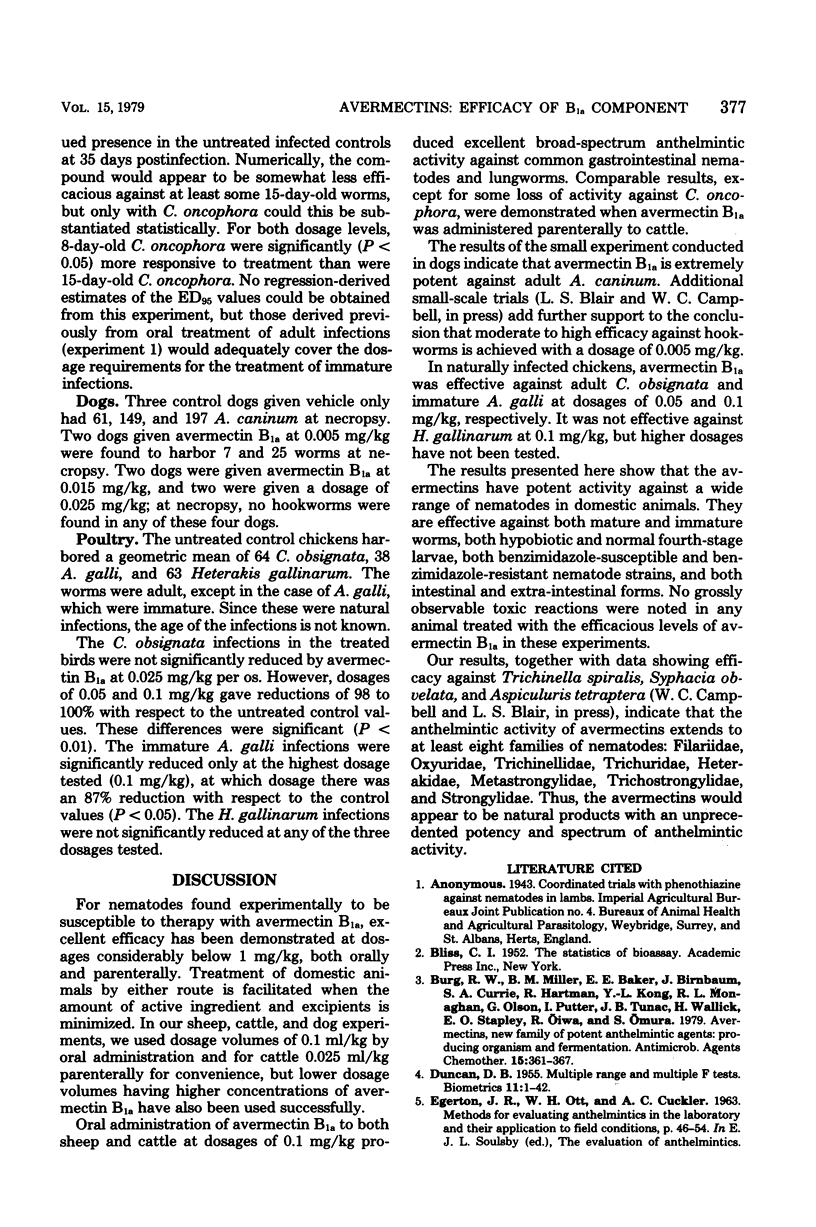
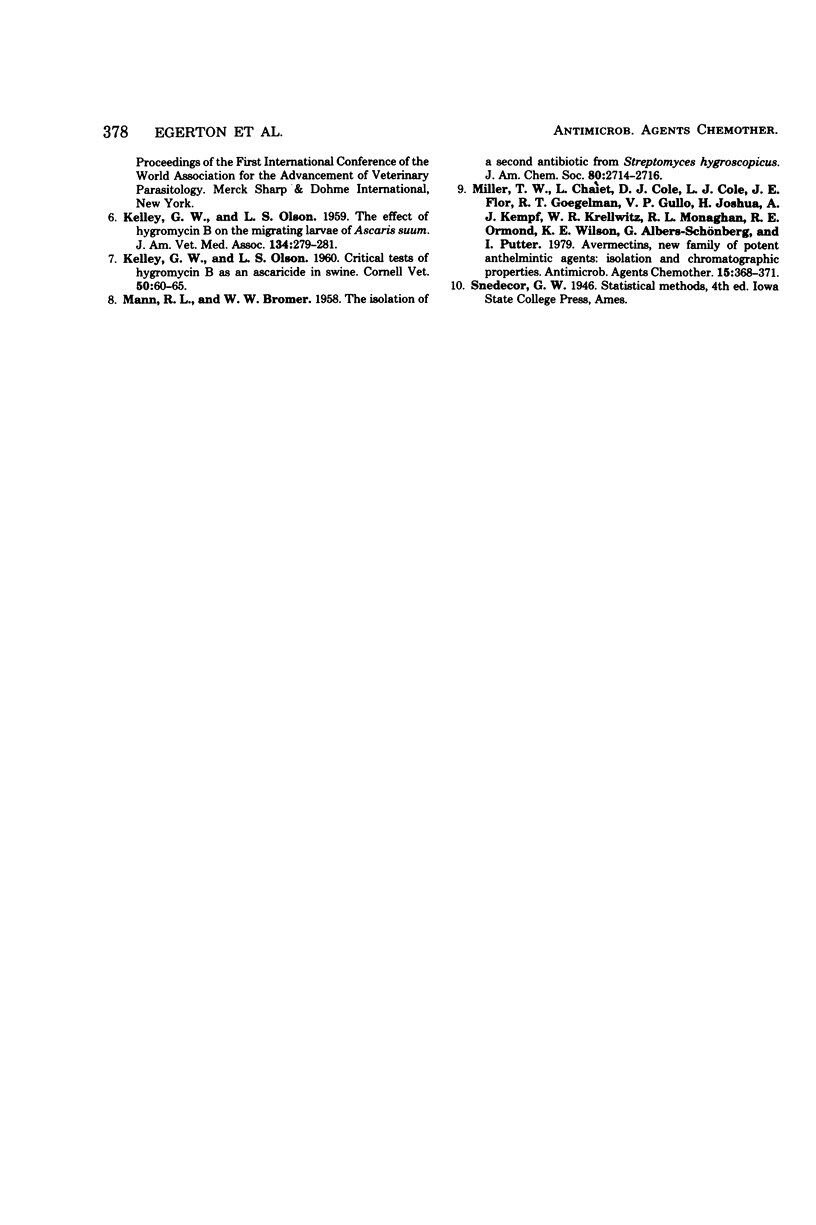
Selected References
These references are in PubMed. This may not be the complete list of references from this article.
- Burg R. W., Miller B. M., Baker E. E., Birnbaum J., Currie S. A., Hartman R., Kong Y. L., Monaghan R. L., Olson G., Putter I. Avermectins, new family of potent anthelmintic agents: producing organism and fermentation. Antimicrob Agents Chemother. 1979 Mar;15(3):361–367. doi: 10.1128/aac.15.3.361. [DOI] [PMC free article] [PubMed] [Google Scholar]
- KELLEY G. W., Jr, OLSEN L. S. The effect of hygromycin B on the migrating larvae of Ascaris suum. J Am Vet Med Assoc. 1959 Mar 15;134(6):279–281. [PubMed] [Google Scholar]
- KELLEY G. W., OLSEN L. S. Critical tests of hygromycin B as an ascaricide of swine. Cornell Vet. 1960 Jan;50:60–65. [PubMed] [Google Scholar]
- Miller T. W., Chaiet L., Cole D. J., Cole L. J., Flor J. E., Goegelman R. T., Gullo V. P., Joshua H., Kempf A. J., Krellwitz W. R. Avermectins, new family of potent anthelmintic agents: isolation and chromatographic properties. Antimicrob Agents Chemother. 1979 Mar;15(3):368–371. doi: 10.1128/aac.15.3.368. [DOI] [PMC free article] [PubMed] [Google Scholar]


